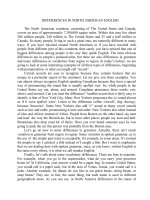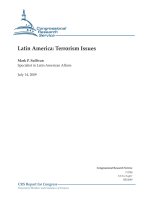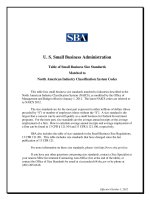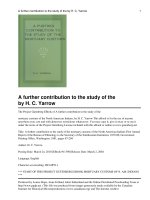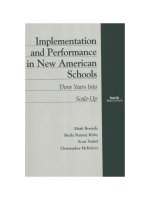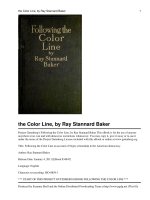Differences in North American English
Bạn đang xem bản rút gọn của tài liệu. Xem và tải ngay bản đầy đủ của tài liệu tại đây (55.46 KB, 2 trang )
DIFFERRENCES IN NORTH AMERICAN ENGLISH
The North American continent, consisting of The United States and Canada,
covers an area of approximately 7,300,000 square miles. Within this area live about
286 million people, 240 million in The United States and 25 and a half million in
Canada. So many people, living in such a great area, are naturally different in many
ways. If you have traveled around North American or if you have traveled with
people from different part of this continent, then surely you have noticed that one of
biggest differences among people is the way they speak English. The most obvious
differences are in people’s pronunciation, but there are also differences in grammar
and many differences in vocabulary from region to region. In today’s lecture, we are
going to look at some interesting examples of all three types of differences, beginning
with pronunciation, or what you might call “accent”.
Certain accents are easy to recognize because they contain features that are
unique to a particular region of the continent. Let me give you three examples. You
can almost always recognize English speaking Canadians because they have a special
way of pronouncing the sound that is usually spelled /out/. So, while people in the
United States say out, about, and around. Canadians pronounce these words: owt,
abowt, and arownd. Can you hear the difference? Another accent that is fairly easy to
identify is that of New York City. Many New Yorkers pronounce the /a/ sound almost
as if it were spelled /owu/. Listen to the difference coffee /cówufi/, dog /dowug/;
because /becowuz/. Some New Yorkers also add “r” sound to many vowel sounds
such as law and order, pronouncing it lawr and order. New Yorkers also idear instead
of idea and Africer instead of Africa. People from Boston on the other hand, say aant
and haaf the way the Bristish do, but in most other places people say aunt and haft.
Bostonians also drop most kk of theirs. Have you ever heard someone says he was
going to pack the car this person was probably from the Boston area.
Let’s go on now to some differences in grammar. Actually, there isn’t much
variation in grammar from region to region. Some variation in spoken grammar, as in
the use of the simple past tense is exceptable, for example, in some areas. It’s normal
for people to say I catched a fish instead of I caught a fish. But I want to emphasize
that we are dealing here with spoken grammar, since, as you know, written English is
the same every where, it is what we call standar English.
Finally, let’s talk about some vocabulary differences. There are funs to examine.
For example, when you go to the supermarket, what do you carry your groceries home
in? In California, your answer would be a paper bag. In eastern United States, you
would call it a paper sack, but in the area of Venus, Ivania, you would call it a poke.
Another example, for dinner do you like to eat green beans, string beans, or snap
beans? They are, in fact, the same thing, but each name is used in different
geographical areas. As you can see, in North America differences in the name of
objects are determined by geography and not by social or economic class as they are
in some other countries.
I want to say, in conclusion, that I have given you just a handful of examples of
regional differences in pronunciation, grammar, and vocabulary in the United States
and Canada. There are naturally hundred of such differences. But in spite of these
differences, North Americans do not have much trouble understanding one another,
even if they come from places that are as far as, say, the northern part of Canada and
the south Texas. The linguistic differences are simply not great enough to interfere
with our ability to communicate with one another.
Interactions II, Listening Skill book, chapter 7


